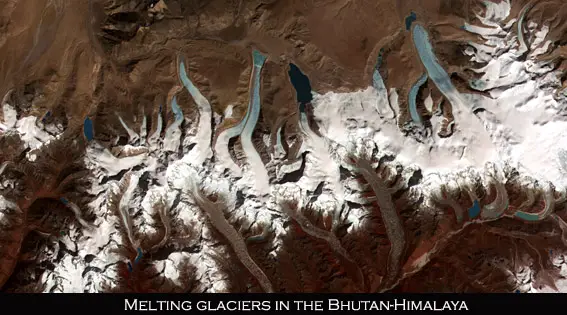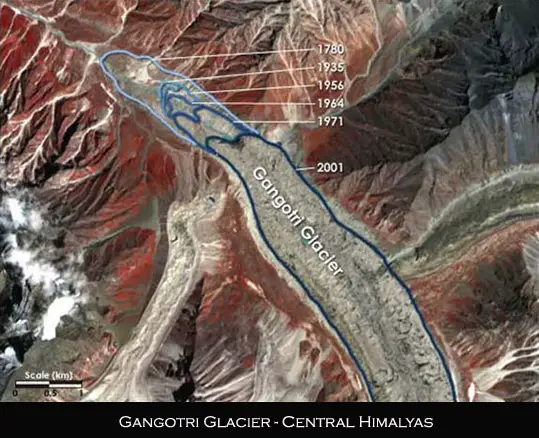While the Himalayan Gangotri glacier has been retreating since measurements began in 1842, the rate of retreat, which was around 62 feet per year between 1935 and 1971, has almost doubled. Gangotri Glacier is 29 kilometres long, and two to six kilometres wide, and sweeps like a gigantic river through the heart of the mountains. It is the longest glacier in the Central Himalayas, with its snout just to the north of the Great Himalayan Range.
Most people do not really understand that the drinking water comes from sources like the Himalayan Gangotri glacier , and in the coming years there is a high likelihood that water shortages will ensue due to melting of these glaciers. According to WWF studies, and due to the rise in temperature, the river flow will increase by 20 per cent initially because of more snow melt. But, ultimately, the flow will decrease by 20 per cent. A population equal to Europe lives in the Ganges basin. Their livelihoods are dependent on the river… This is a tragedy is in the making.

Dozens of mountain lakes in Nepal and Bhutan are so swollen from melting glaciers that they could become mountain tsunamis, bursting their seams and devastating many Himalayan villages. Glacial lake outburst floods are potentially disastrous as temperature increases create an increase in the number and extent of glacial lakes. Catastrophic outbursts of glacial lakes result in widespread damage to persons and villages, washing away bridges, and filling water with debris and large logs.
Scientists are monitoring glacial melting on only a handful of the 7,000 glaciers that cover the Indian Himalayas. It is not feasible to visit and measure every major glacier on Earth. There are almost 160,000 glaciers in Earth’s polar regions and high mountain environments. As a result, researchers are increasingly using satellite remote sensors to survey our world’s glaciers. (The Himalayan Gangotri glacier is a NASA image by Jesse Allen, Earth Observatory; based on data provided by the ASTER Science Team.)

Glaciologist from Jawaharlal Nehru University, Delhi, Rajesh Kumar says, “This increased melt rate/descent is largely due to warming up, thanks to the emission of green house gases. But increased human interference is also not a good sign for the glacier’s health. Earlier, there were nine tributaries to the Gangotri glacier. Now we are left with five.”
Himalayan glaciers are rapidly retreating, with a gradual increase in droughts, flash floods, and landslides not the only issues to worry about. Just when power companies are planning more hydro energy sources to power India’s growing economy, a rising level of sediment in regional rivers is creating havoc for many grids.
There is likely to be increased severity and frequency of monsoonal storms and flooding in the Himalayas, which are expected outcomes of climate change, may significantly alter the area’s erosion, river discharge, and sediment dynamics. Eventually, this may affect existing hydropower reservoirs, as well as those planned for construction in the Himalayas. Part of the generated sediment may be deposited on agricultural lands or in irrigation canals and streams, which will contribute to a deterioration in crop production and in the quality of agricultural lands.
